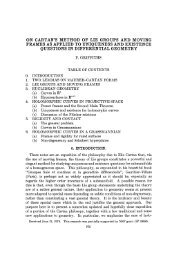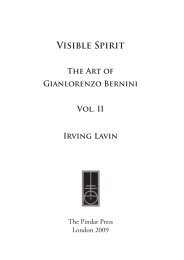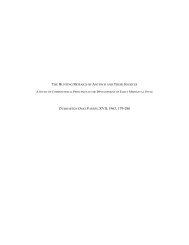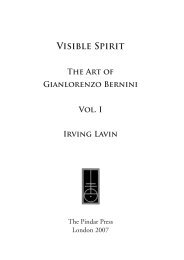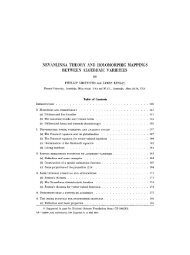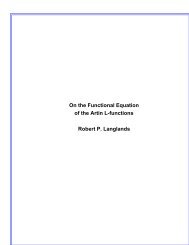View PDF - Project Euclid
View PDF - Project Euclid
View PDF - Project Euclid
Create successful ePaper yourself
Turn your PDF publications into a flip-book with our unique Google optimized e-Paper software.
482 PHILLIP A. GRIFFITHS<br />
unable to establish (4.21). As will seen below, (4.17) would be an immediate<br />
consequence of this result.<br />
What we will do is prove enough of (4.21) for our purposes. Namely, on<br />
u G(n, N) there is an intrinsic differential ideal 8 # defined as follows: Over<br />
{z, T} we consider frames {z; el," ", eN} where T-z el/k. /k en. Then the<br />
forms<br />
o, do, (/x n + 1,.. ", N)<br />
generate an intrinsic differential ideal , and we shall prove that<br />
(4.22) c,_ () modulo #.<br />
Assuming this result for a moment, we will complete the proof of (4.17). For<br />
this consider M as embedded in (n, N) n x G(n, N) by the refined Gauss<br />
mapping<br />
z {z, Tz(M)}.<br />
Using Darboux frames we see that M is an integral manifold of the differential<br />
system #, so that by (4.22) and (4.2) (cf. footnotez)<br />
( c"-(u) *<br />
f_ I(M<br />
((N-k,N)( fMnL Cn-k(u))dL.<br />
Now M L is mapped into (n k, N<br />
generic L, and so<br />
M 7) L<br />
k, N) by z {z, Tz(M L), L} for<br />
Cn k(U) (M L Cn k(M L)"<br />
Combining with the previous step gives (4.17).<br />
Turning to the proof of (4.22), we first note that the form $ on N<br />
is invariant under the group of transformations<br />
G(n, N)<br />
{z, T} {gz + b, g T}<br />
where g U(N) and b u. It follows that O is determined by its value at one<br />
point, say {0, "}. If we write the (1, 0) cotangent space at this point as<br />
V W,





